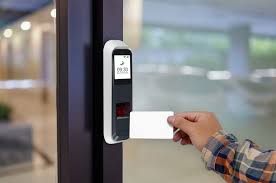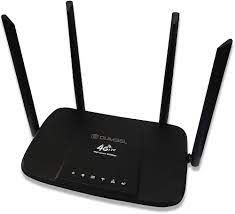Face Biometric Attendance: Revolutionizing Workforce Management
In today’s fast-paced world, businesses are constantly seeking innovative solutions to streamline their operations and increase productivity. One area that has witnessed significant advancements is workforce management, particularly in the realm of attendance tracking. Traditional methods such as manual punch cards or swipe cards have proven to be inefficient and prone to errors. This is where face biometric attendance comes into play, revolutionizing the way organizations manage their workforce.
Face biometric attendance utilizes cutting-edge facial recognition technology to accurately identify and record employee attendance. By analyzing unique facial features, such as the distance between the eyes, nose shape, and jawline, this technology enables seamless and secure identification of individuals. It eliminates the need for physical contact or any additional tools like ID cards or fingerprints.
The benefits of implementing face biometric attendance are manifold. Firstly, it provides a highly accurate method of tracking employee attendance. The advanced algorithms used in facial recognition systems ensure precise identification, reducing instances of buddy punching or time theft. This leads to improved punctuality and accountability among employees.
Moreover, face biometric attendance offers unparalleled convenience for both employees and employers alike. Employees no longer need to carry physical cards or remember PIN numbers; all they need is their face. This eliminates the hassle of lost or forgotten cards and saves time during check-ins and check-outs.
From an administrative perspective, face biometric attendance systems simplify the entire process of managing employee attendance data. The automated nature of these systems significantly reduces manual effort and human errors associated with traditional methods. Attendance records are digitally stored in a secure database, allowing for easy retrieval and analysis when needed.
Additionally, face biometric attendance enhances security within an organization. Since each individual’s face is unique, it becomes extremely difficult for unauthorized personnel to gain access using someone else’s identity. This ensures that only authorized employees are present on-site at any given time.
Furthermore, implementing face biometric attendance can lead to cost savings for businesses. With the elimination of physical cards and the reduction in manual data entry, organizations can save on expenses related to card production, replacement, and administrative labor. The return on investment is often realized quickly, making it a worthwhile investment for companies of all sizes.
It is important to note that face biometric attendance systems prioritize data privacy and security. Advanced encryption techniques are employed to safeguard personal information, ensuring compliance with data protection regulations.
In conclusion, face biometric attendance has emerged as a game-changer in workforce management. Its accuracy, convenience, security, and cost-effectiveness make it an ideal solution for organizations across various industries. By implementing this technology, businesses can optimize their operations and focus on what truly matters – driving growth and success.
Frequently Asked Questions about Face Biometric Attendance: Cost, Functionality, and Applications
- What is the cost of face biometric machine?
- What is biometric attendance with face recognition?
- What is face biometric capture?
- What is face biometrics used for?
What is the cost of face biometric machine?
The cost of a face biometric machine can vary depending on several factors, such as the brand, features, and capabilities of the device. Generally, face biometric machines range in price from around $100 to several thousand dollars.
Lower-priced options typically offer basic facial recognition capabilities and may have limited storage capacity for user data. On the other hand, higher-end models often come with advanced features like high-resolution cameras, larger storage capacity, faster processing speeds, and additional security measures.
It’s important to consider your specific requirements and budget when choosing a face biometric machine. Factors such as the number of employees/users you need to accommodate, the desired level of accuracy and reliability, and any additional functionalities or integration requirements will influence the overall cost.
Keep in mind that along with the initial purchase cost of the machine itself, there may be additional expenses such as software licenses, maintenance fees, and technical support. It’s advisable to research different vendors or consult with experts in the field to get accurate pricing information tailored to your specific needs.
What is biometric attendance with face recognition?
Biometric attendance with face recognition is a technology-driven system that utilizes facial recognition algorithms to accurately identify and record employee attendance. It is a modern approach to workforce management that eliminates the need for traditional methods such as punch cards, swipe cards, or PIN numbers.
In this system, employees’ faces are scanned and analyzed using advanced facial recognition technology. The system captures unique facial features, such as the distance between the eyes, nose shape, and jawline, to create a digital template or biometric signature for each individual. This template is then stored in a secure database for future reference.
When an employee arrives at work or checks in at a designated location, their face is scanned by the biometric attendance system. The facial recognition algorithm compares the captured image with the stored templates to identify the individual. If there is a match, it records their attendance automatically and accurately.
The advantages of using biometric attendance with face recognition are numerous. Firstly, it provides a highly accurate method of tracking employee attendance. Facial recognition algorithms have become increasingly sophisticated over time, minimizing false positives and negatives. This reduces instances of buddy punching or time theft and ensures reliable attendance data.
Secondly, biometric attendance with face recognition offers convenience for both employees and employers. Employees no longer need to carry physical cards or remember PIN numbers; their face becomes their identification. This eliminates the hassle of lost or forgotten cards and saves time during check-ins and check-outs.
From an administrative perspective, this system simplifies attendance management processes. The automated nature of biometric systems reduces manual effort and human errors associated with traditional methods. Attendance records are digitally stored in a secure database, allowing for easy retrieval and analysis when needed.
Moreover, biometric attendance with face recognition enhances security within an organization. Since each person’s face is unique, it becomes extremely difficult for unauthorized individuals to gain access using someone else’s identity. This ensures that only authorized employees are present on-site at any given time, enhancing overall security.
It is worth noting that biometric attendance with face recognition prioritizes data privacy and security. Measures such as encryption techniques are implemented to safeguard personal information, ensuring compliance with data protection regulations.
In summary, biometric attendance with face recognition is a technologically advanced solution for accurate and efficient workforce management. Its accuracy, convenience, security, and data privacy features make it an ideal choice for organizations looking to optimize their attendance tracking processes and enhance overall operational efficiency.
What is face biometric capture?
Face biometric capture refers to the process of capturing and recording an individual’s facial features and characteristics for identification and verification purposes. It involves using specialized cameras or devices equipped with facial recognition technology to capture high-resolution images or videos of a person’s face.
During the capture process, the camera analyzes various facial attributes, such as the distance between the eyes, the shape of the nose, mouth, and jawline, and other unique features. These attributes are then converted into mathematical algorithms or templates that create a digital representation of an individual’s face.
The captured biometric data is typically stored in a secure database for future comparisons. When a person needs to be identified or verified, their face is captured again using the same technology. The new image or video is then compared with the stored templates to determine if there is a match.
Face biometric capture technology has advanced significantly in recent years, utilizing sophisticated algorithms and machine learning techniques to improve accuracy and reliability. It can handle variations in lighting conditions, facial expressions, and even changes in appearance due to aging or facial hair.
This technology has found widespread applications in various industries, including security systems, access control systems, attendance tracking systems, law enforcement agencies, and even mobile devices for unlocking screens using facial recognition.
It is important to note that face biometric capture focuses on capturing physical characteristics only and does not involve capturing any personal information such as names or addresses. Privacy concerns are addressed by ensuring that data protection regulations are followed during storage and usage of captured biometric data.
Overall, face biometric capture plays a crucial role in enabling secure identification and verification processes by leveraging unique facial features for accurate recognition.
What is face biometrics used for?
Face biometrics is used for a variety of purposes, primarily focused on identification and authentication. Here are some common applications:
- Attendance Tracking: Face biometrics is widely used in workforce management systems to accurately track employee attendance. It eliminates the need for physical cards or PIN numbers, ensuring accurate identification and reducing instances of time theft.
- Access Control: Face biometrics is employed in access control systems to grant or deny entry to individuals based on their facial features. It enhances security by ensuring that only authorized personnel can gain access to restricted areas.
- Identity Verification: Face biometrics is utilized for identity verification purposes, such as during customer onboarding processes or when accessing secure digital platforms. It provides a reliable and convenient method of confirming an individual’s identity.
- Surveillance and Security: Facial recognition technology is deployed in surveillance systems to identify individuals in real-time or analyze recorded video footage. It can help law enforcement agencies in identifying suspects or enhancing public safety by monitoring crowded areas.
- Personal Device Security: Many smartphones and laptops now feature facial recognition as a security measure to unlock the device or authenticate transactions securely.
- Border Control and Immigration: Face biometrics are increasingly used at border checkpoints for immigration purposes, allowing authorities to verify the identity of travelers quickly and efficiently.
- Customer Experience Enhancement: Some businesses use face biometrics to personalize customer experiences by recognizing loyal customers as they enter their premises, allowing for tailored services or targeted marketing efforts.
- Law Enforcement and Investigations: Facial recognition technology assists law enforcement agencies in identifying suspects from images or video footage, aiding investigations and enhancing public safety.
It’s worth noting that while face biometrics offers various benefits, there are also concerns surrounding privacy, data protection, and potential misuse of this technology. Responsible implementation with proper safeguards is crucial to address these concerns effectively.




